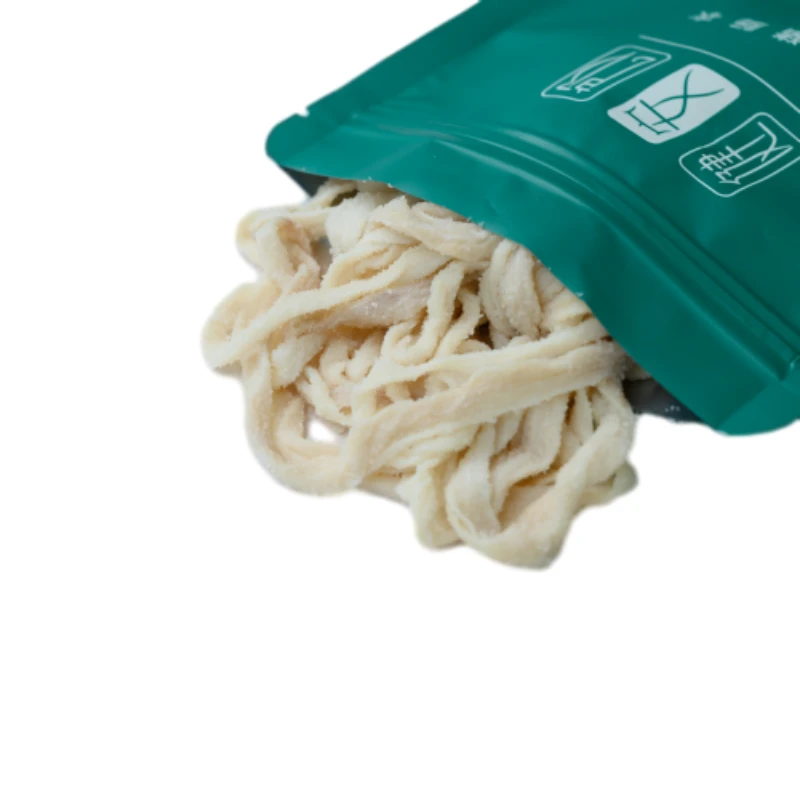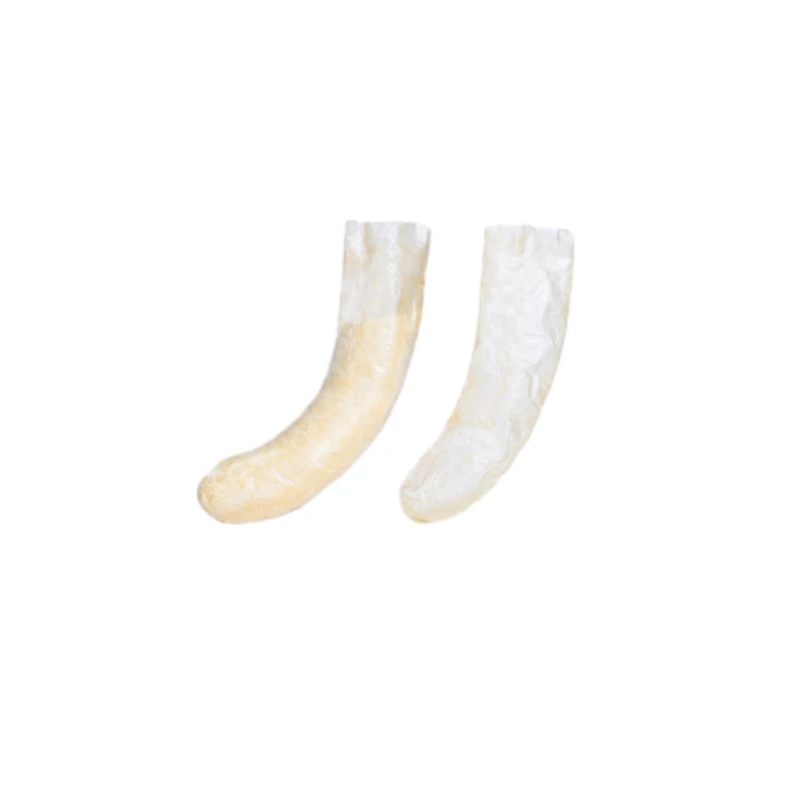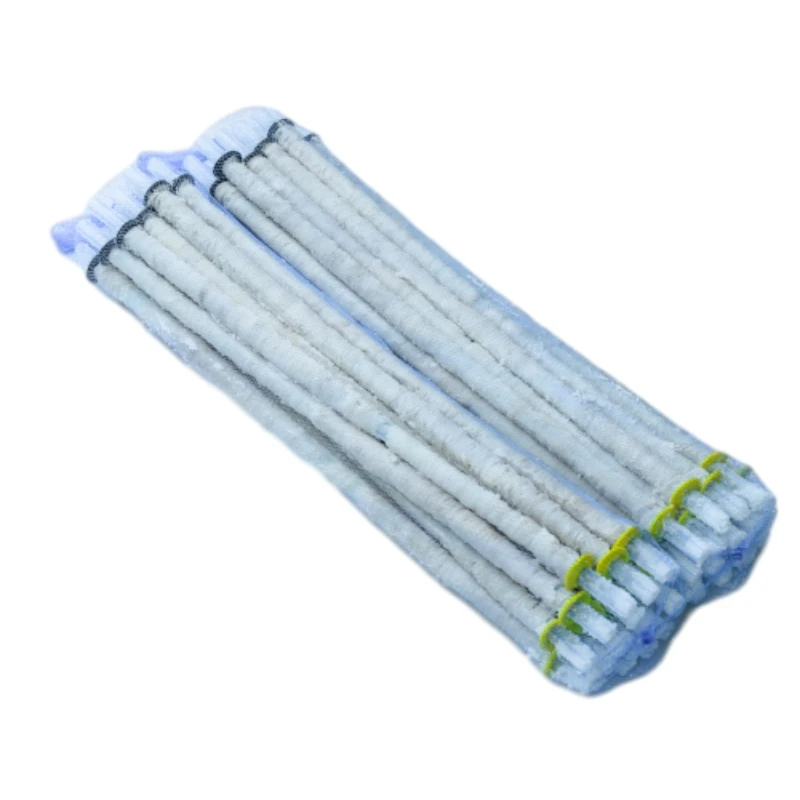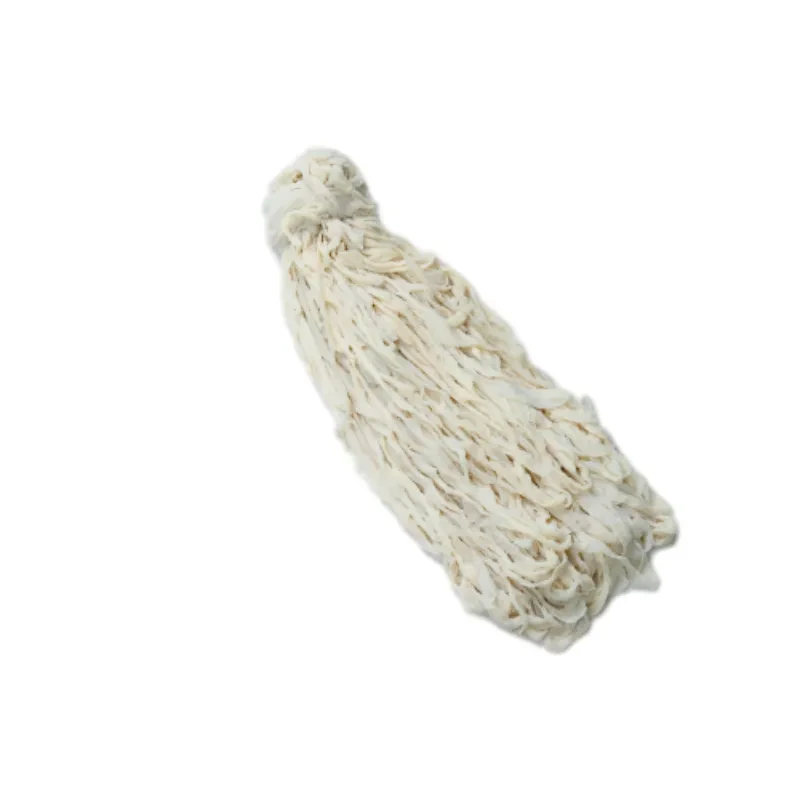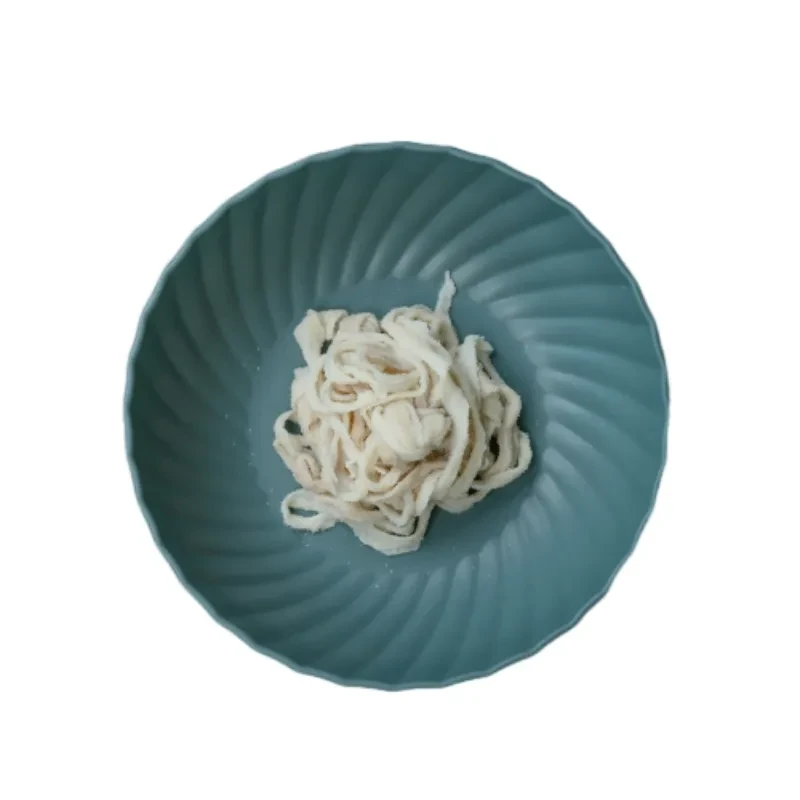Aug . 14, 2025 06:00
Understanding Dried Hog Casings: A Foundation for Quality Sausage Production
In the realm of artisanal and industrial sausage production, the choice of casing significantly impacts the final product's texture, appearance, and consumer appeal. How to use dry sausage casing effectively is a critical skill for any producer aiming for consistent, high-quality results. Dried hog casings, derived from the submucosa of porcine intestines, offer an unparalleled natural solution, providing excellent permeability for smoking and a tender bite. Unlike synthetic alternatives, these natural casings contribute to the sausage's authentic mouthfeel and traditional aesthetic. Their versatility allows them to be used across a broad spectrum of sausage types, from fresh breakfast links to cured and smoked delicacies, making them a staple in the meat processing industry. Understanding their properties and proper handling is paramount to maximizing their inherent advantages.
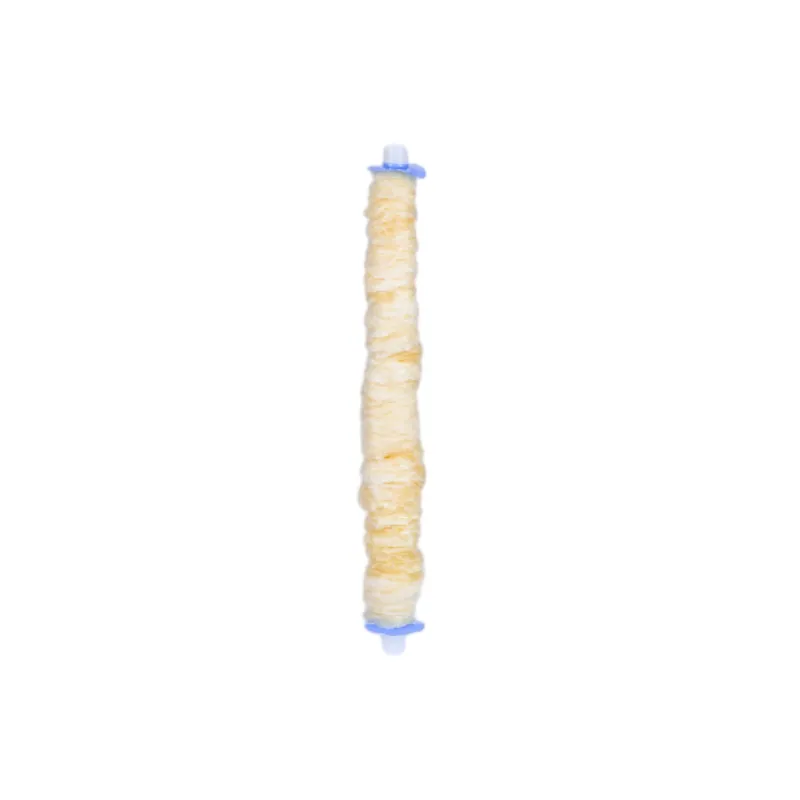
The global demand for natural casings continues to grow, driven by consumer preference for natural ingredients and traditional food preparation methods. Manufacturers and butchers alike seek reliable, high-performing dried hog casings that can withstand the rigors of modern processing while imparting superior qualities to the finished product. These casings are carefully processed, cleaned, and dried to ensure shelf stability and ease of handling prior to rehydration. This pre-processing allows for efficient storage and distribution, significantly reducing logistical complexities for producers worldwide. The inherent strength and elasticity of the dried hog casing make it an ideal choice for various stuffing pressures and processing techniques, from manual operations to high-speed automated lines, ensuring integrity throughout production.
Mastering the Rehydration Process: Core to How to Use Dry Sausage Casing
The foundational step in preparing how to use dry sausage casing is proper rehydration. This critical process restores the casing's natural elasticity and pliability, making it suitable for stuffing. Dried hog casings are typically packed with a protective layer of salt, which acts as a natural preservative, inhibiting microbial growth and maintaining the casing's structural integrity during storage. Before use, this salt must be thoroughly rinsed off, and the casings must be rehydrated to achieve optimal performance. Failure to adequately rehydrate can result in brittle casings that easily break during stuffing, leading to product loss and inefficiency. The rehydration process itself is straightforward but requires adherence to specific guidelines to ensure success and minimize potential issues during the subsequent stuffing phase.

Step-by-Step Rehydration Protocol:
- Rinsing: Begin by placing the dried hog casings under cold running water. Gently separate the strands and thoroughly rinse away all the salt, both inside and out. This initial rinse removes the preservative and begins the rehydration process.
- Soaking: After rinsing, submerge the casings in lukewarm water (approximately 25-30°C or 77-86°F) for 30 minutes to 2 hours. The duration depends on the casing's caliber and original dryness. For thicker casings, overnight soaking in cold water in a refrigerator can also be beneficial, allowing for a slower, more complete rehydration.
- Flushing: Before stuffing, it is crucial to flush the inside of the casings with fresh, lukewarm water. This step ensures that the casing is fully open, free of any internal obstructions, and ready to accept the meat emulsion smoothly. This also helps in checking for any potential pinholes or weaknesses in the casing wall.
- Ready for Stuffing: The casings are ready when they feel supple, elastic, and easily stretch without tearing. They should have a uniform translucency and no brittle spots. Proper rehydration is the cornerstone for achieving uniform sausage filling and minimizing bursts during processing.
Adhering to this rehydration protocol is vital for optimizing the performance of dried hog casings. It directly impacts the stuffing efficiency, product consistency, and overall yield. This initial preparation sets the stage for a smooth and successful sausage production cycle, contributing significantly to the final product's quality and shelf stability. The ability of these casings to expand and contract with the meat during cooking and cooling cycles also necessitates thorough rehydration to prevent shrinkage-related issues and ensure a visually appealing product.
The Art of Sausage Stuffing and Processing with Dried Hog Casings
Once properly rehydrated, the next phase in learning how to use dry sausage casing involves the stuffing process. This stage requires precision to ensure an even fill and prevent air pockets, which can lead to spoilage or uneven cooking. Whether utilizing a manual stuffer for artisanal batches or an automated vacuum stuffer for high-volume industrial production, the elasticity and tensile strength of quality dried hog casings are paramount. These casings exhibit excellent resilience under pressure, accommodating various meat emulsions, from fine-grind frankfurters to coarse-ground breakfast sausages. Their natural collagen structure allows for secure linking and twisting, creating visually appealing and uniformly sized sausages, essential for both retail presentation and consistent cooking outcomes.
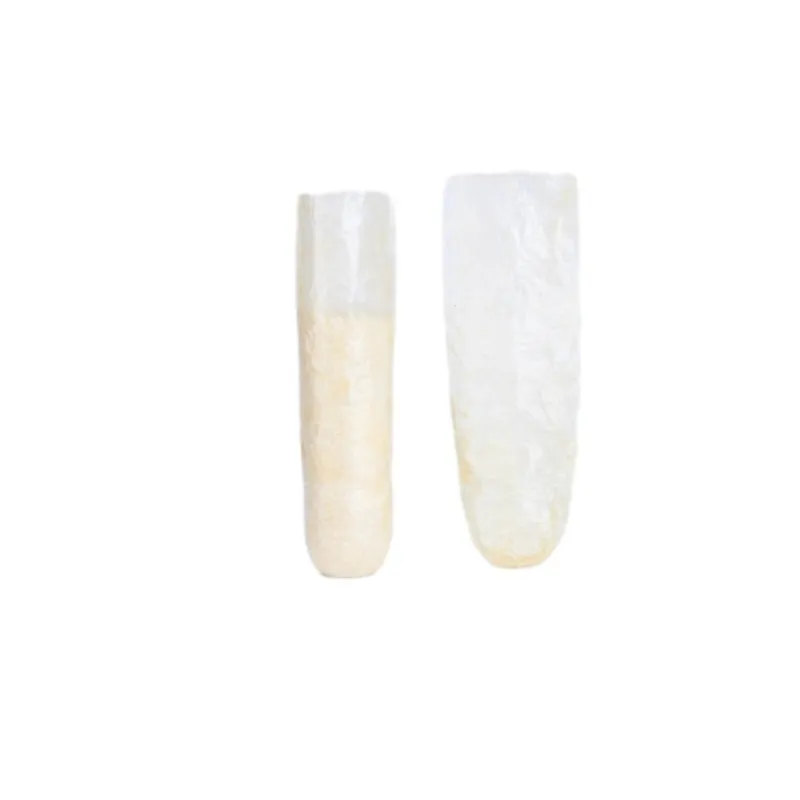
Post-stuffing, the versatility of dried sausage casings becomes evident across various processing methods. For fresh sausages, they provide a natural and edible enclosure that crisps beautifully when cooked. In smoked sausage production, their porous nature allows for optimal smoke penetration, imparting rich flavor and desirable color, which is critical for products like kielbasa or bratwurst. For dry-cured sausages, the casings facilitate the controlled moisture loss necessary for fermentation and aging, contributing to the characteristic texture and complex flavor profiles of salamis and chorizos. Their breathability ensures proper drying and prevents case hardening, a common issue with less permeable casings. The uniform caliber of high-quality casings further ensures consistent drying rates, leading to more predictable and reliable curing processes.
The intrinsic properties of natural casings, such as their edibility and unique "snap" when bitten, elevate the consumer experience. This superior sensory quality is a significant differentiator for products using dried hog casings compared to those encased in collagen or fibrous alternatives. The ability of these casings to shrink and expand with the meat during cooking also reduces fat rendering and improves moisture retention, resulting in a juicier, more flavorful sausage. For producers focusing on clean-label products and traditional craftsmanship, dried hog casings remain the preferred choice, aligning with consumer demand for authentic and minimally processed food items.
Technical Specifications and Performance Parameters of Dried Hog Casings
Understanding the technical specifications of dried hog casings is crucial for precise application and consistent product outcomes. Key parameters include caliber (diameter), length per hank, and typical rehydration yield. These factors directly influence sausage dimensions, production efficiency, and overall cost-effectiveness. High-quality casings undergo rigorous sorting and grading processes to ensure uniformity, which is vital for automated stuffing lines. Producers specify casing sizes based on their target sausage product, whether it's a thin breakfast link or a robust Italian sausage. The integrity of the casing wall, its tensile strength, and its elasticity post-rehydration are critical performance indicators that ensure minimal breakage during stuffing and optimal product appearance. Below is a representative table outlining typical parameters for premium dried hog casings.
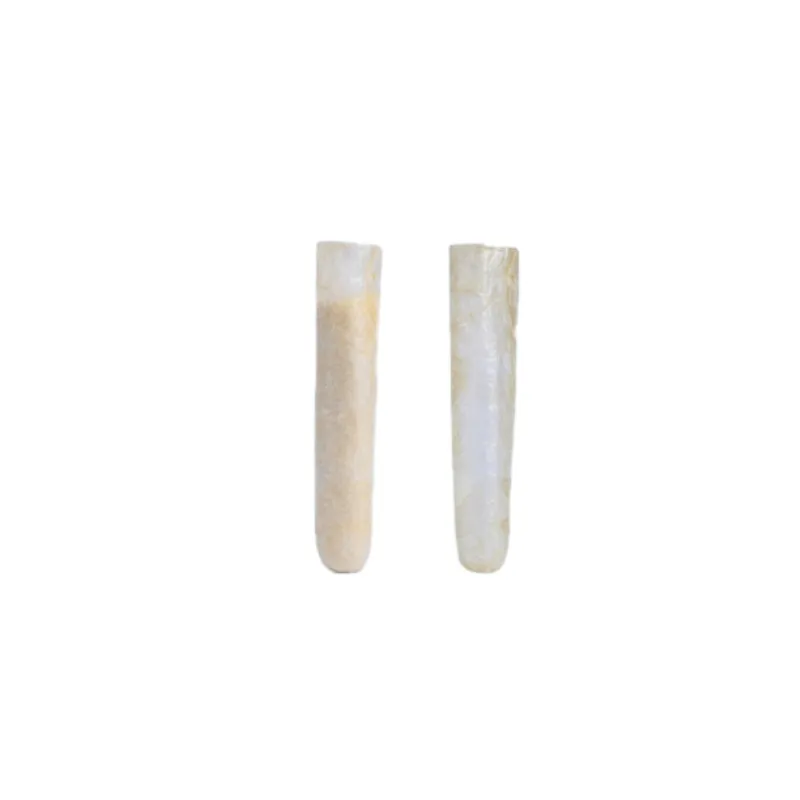
| Parameter | Typical Range (Dried Hog Casing) | Impact on Sausage Production |
|---|---|---|
| Caliber (Diameter) | 28mm - 40mm (pre-stuffed) | Determines final sausage thickness; crucial for consistent product sizing. |
| Length per Hank | 91.44 meters (100 yards) standard, custom available | Affects stuffing efficiency and run-time on automated lines; reduces waste. |
| Rehydration Time (Optimal) | 30 minutes to 2 hours (warm water) | Ensures pliability and prevents breakage; impacts production lead time. |
| Tensile Strength (Post-Rehydration) | > 25N (Newton) | Resilience against stuffing pressure, minimizing bursts and ensuring integrity. |
| Salt Content (Preservative) | Typically > 20% (by weight) | Ensures long-term shelf stability; requires thorough rinsing before use. |
| Shelf Life (Sealed, Dry Storage) | 24 months at 0-10°C (32-50°F) | Facilitates inventory management and reduces spoilage risks. |
These technical attributes underscore the importance of selecting a reputable supplier for your dried hog casings. A consistent product ensures predictable performance in your manufacturing process, leading to higher yields and reduced operational costs. The natural composition of these casings contributes to their excellent sensory properties, including the desired "snap" and permeability for smoking, which is critical for product differentiation in a competitive market. Furthermore, their inherent flexibility allows them to conform well to various sausage shapes and sizes, providing an aesthetically pleasing final product that appeals to discerning consumers.
Advantages of Dried Hog Casings in Modern Production
The strategic advantages of integrating dried hog casings into modern sausage production extend beyond mere encasement. These natural casings offer superior aesthetic appeal, providing a traditional, artisanal look that resonates with today's consumers who prioritize authentic food experiences. Their unique permeability allows for optimal smoke absorption during processing, yielding a deeper, richer flavor profile and a desirable color often sought in premium smoked meats. Unlike many artificial casings, dried hog casings are fully edible, contributing a satisfying "snap" or "bite" that significantly enhances the textural experience of the finished sausage, a sensory attribute highly valued by gourmands and casual diners alike. This edibility also simplifies the consumption process, making sausages more convenient for end-users.
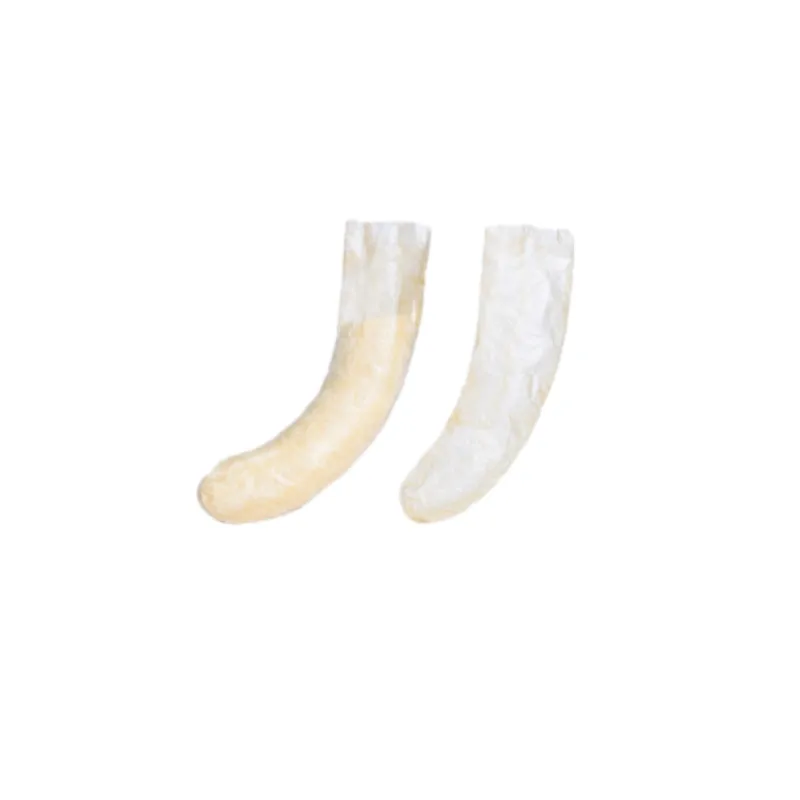
From a technical perspective, the elasticity and strength of high-quality dried sausage casings contribute to increased production efficiency and reduced waste. Their consistent caliber, meticulously sorted by leading suppliers, ensures smooth operation on automated stuffing lines, minimizing downtime due to breakages. This consistency is crucial for large-scale producers where even minor interruptions can significantly impact output. Furthermore, natural casings provide excellent meat adherence, which minimizes fat rendering during cooking and helps retain moisture, resulting in a juicier, more flavorful product and improved yield. This natural adherence is a key factor in preventing "greasy" sausages and ensuring a superior mouthfeel. The inherent antimicrobial properties of the natural material, along with proper processing, also contribute to the safety and shelf stability of the final product.
The rising trend towards "clean label" products and sustainable sourcing further bolsters the appeal of natural casings. As consumers increasingly scrutinize ingredient lists, the simplicity of a natural hog casing offers a distinct market advantage over synthetic alternatives that may contain additives or require complex manufacturing processes. Embracing dried hog casings aligns producers with sustainable practices, utilizing a byproduct of the meat industry and contributing to a circular economy model. This not only enhances brand image but also caters to a growing segment of environmentally conscious consumers. The natural variations in texture and appearance also contribute to the artisanal appeal, allowing each sausage to have a unique character, distinguishing it from mass-produced uniform products.
Quality Assurance and Certifications for Dried Hog Casings
In the highly regulated food industry, the quality and safety of ingredients are non-negotiable. For dried hog casings, adherence to stringent international standards and certifications is paramount, ensuring both product integrity and consumer trust. Reputable suppliers of these casings operate under rigorous quality management systems that encompass the entire supply chain, from raw material sourcing to final packaging. Key certifications often include ISO 22000 for Food Safety Management, which demonstrates a comprehensive approach to food safety hazards. Furthermore, compliance with HACCP (Hazard Analysis and Critical Control Points) principles is fundamental, systematically identifying and controlling potential biological, chemical, and physical hazards in the production process. This commitment to food safety is critical for B2B buyers who need assurance that their ingredients meet global regulatory requirements and uphold brand reputation.
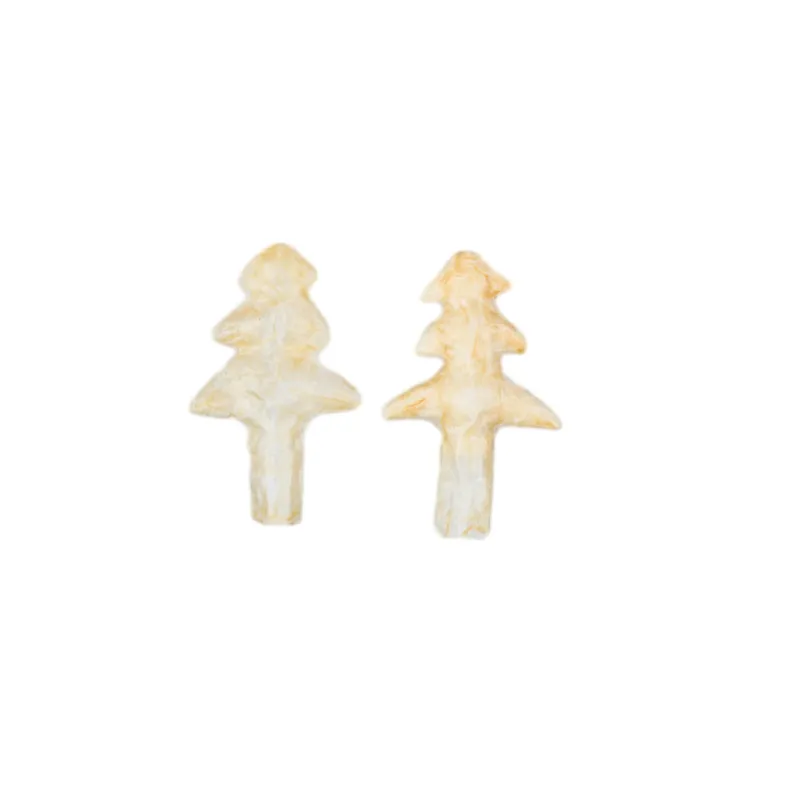
Beyond general food safety, specific industry certifications and regulatory compliance are essential. For products destined for international markets, compliance with USDA, FDA (U.S. Food and Drug Administration), and EU regulations is a necessity. This includes strict guidelines on animal health, processing hygiene, and traceability. Leading manufacturers of dried hog casings often provide comprehensive batch-specific documentation, enabling full traceability from the farm to the processing plant and ultimately to the customer. This level of transparency is invaluable for risk management and for demonstrating due diligence to auditors and consumers alike. Independent third-party audits further validate these quality claims, providing an unbiased assessment of manufacturing practices and product conformity.
The longevity and consistent performance of dried sausage casings also rely on precise manufacturing processes. While not "forged" or "CNC machined" like industrial components, their processing involves meticulous cleaning, calibration, and salting/drying to achieve optimal preservation and usability. This includes adherence to specific temperature and humidity controls during drying to prevent spoilage and ensure structural integrity. Companies with decades of experience in the natural casing industry often possess proprietary techniques that yield superior products, characterized by excellent strength, elasticity, and minimal defects. Choosing a supplier with a proven track record, extensive experience, and robust certifications is a strategic decision that directly impacts the quality and reliability of your final sausage product, reinforcing consumer confidence and market positioning.
Custom Solutions and Application Successes with Dried Hog Casings
Addressing the diverse needs of the global sausage market often requires more than off-the-shelf solutions. Leading providers of dried hog casings excel in offering custom solutions, tailoring product specifications to meet unique application scenarios and production line requirements. This customization can include specific caliber ranges, particular lengths per hank, or even bespoke packaging formats designed to integrate seamlessly with a client's automated stuffing machinery. For instance, a producer focusing on narrow-diameter breakfast sausages might require a consistent supply of 28/30mm casings pre-packed in specific counts for rapid loading, while a large-scale salami manufacturer might need wider 38/40mm casings, optimized for precise stuffing volumes and controlled drying rates. This adaptability ensures that producers can maximize efficiency and optimize their product's characteristics, whether aiming for a traditional rustic look or a sleek, modern presentation.
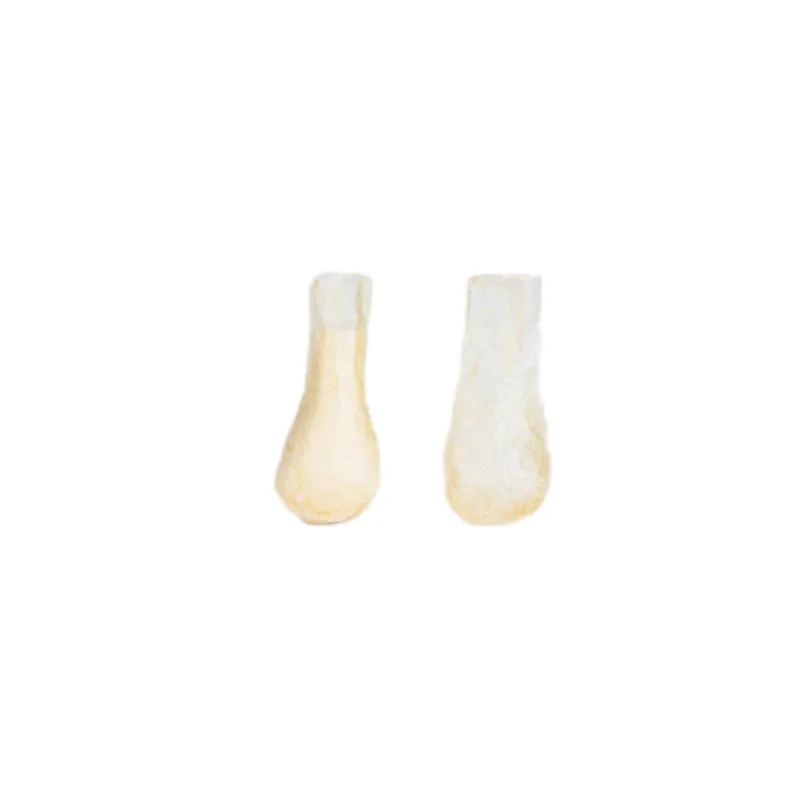
Application successes with dried hog casings span a wide array of meat products and processing techniques. A notable example includes a European artisanal charcuterie producer who transitioned from synthetic to natural casings for their dry-cured salami line. By leveraging expertly calibrated dried hog casings, they observed a significant improvement in moisture exchange during the curing process, resulting in a more uniform drying profile and a superior final product texture, reminiscent of time-honored traditions. This shift not only enhanced the product's quality but also allowed them to market their salami with a "natural casing" claim, appealing to a premium segment of consumers and increasing their market share by 15% within the first year. The enhanced breathability of natural casings proved crucial for achieving the desired bloom and authentic flavor development in their aged products.
Another compelling case involves a North American industrial sausage manufacturer specializing in fresh bratwurst. Faced with inconsistent casing performance from a previous supplier, they partnered with a leading provider of dried hog casings for a tailored solution. The new casings, supplied with optimized rehydration properties and superior tensile strength, led to a 20% reduction in casing breakage rates on their high-speed stuffing lines. This efficiency gain translated directly into reduced material waste, lower labor costs, and a substantial increase in daily production output. Furthermore, the improved consistency of the casings ensured uniform filling and linking, enhancing the visual appeal and cookability of their bratwurst. These real-world examples underscore the tangible benefits and return on investment achieved by strategic partnerships with expert suppliers who understand the nuances of how to use dry sausage casing in diverse industrial and artisanal settings.
Frequently Asked Questions (FAQ) about Dried Hog Casings
Navigating the specific requirements and best practices for using natural casings often leads to common questions. Here, we address some of the most frequently asked questions regarding dried hog casings, providing practical insights for efficient and effective sausage production. These insights are drawn from years of industry experience and technical expertise, aiming to clarify common concerns and optimize your use of these versatile casings.
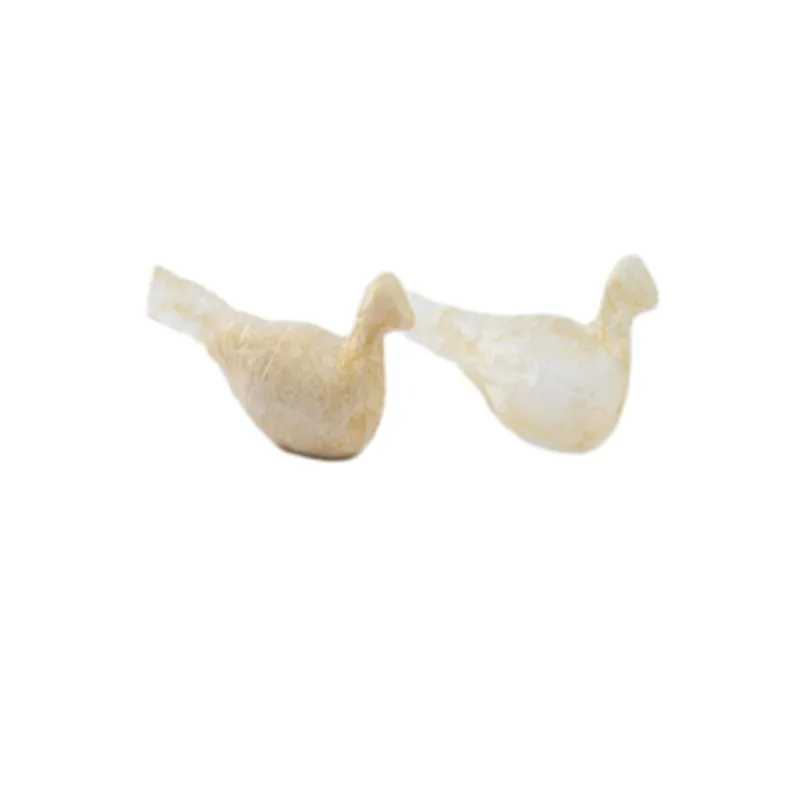
-
Q: How long can dried hog casings be stored, and what are the ideal storage conditions?
A: Dried hog casings have an excellent shelf life, typically up to 24 months, when stored properly. They should be kept in a cool, dry place, ideally between 0-10°C (32-50°F), away from direct sunlight and strong odors. Ensuring the packaging remains sealed will prevent moisture absorption and maintain their quality over time. Proper storage is key to understanding how to use dry sausage casing efficiently over extended periods.
-
Q: Can I re-salt unused rehydrated casings?
A: While technically possible, it is not recommended for optimal quality. Re-salting rehydrated casings can lead to a loss of elasticity and increased brittleness. It is best practice to rehydrate only the amount of casings needed for immediate use. If unavoidable, ensure they are thoroughly re-salted with fine pickling salt and stored in a sealed container111 in the refrigerator, but use them as soon as possible for best results.
-
Q: What is the ideal stuffing pressure for dried hog casings?
A: The ideal stuffing pressure depends on the casing caliber, the meat emulsion's consistency, and the type of stuffer. Generally, casings should be stuffed firmly to eliminate air pockets, but not so tightly that they burst. A good indicator is a plump sausage that retains its shape but still feels slightly pliable. Practice and experience with your specific equipment and meat mix are the best guides for mastering how to use dry sausage casing under pressure.
-
Q: How does the quality of dried hog casings impact final product yield?
A: High-quality dried hog casings, characterized by uniform caliber, strong tensile strength, and minimal defects, significantly contribute to higher yields. Fewer breakages during stuffing, consistent filling, and optimal moisture retention during cooking/curing all lead to more marketable finished product and less waste. Investing in premium dried hog casings directly translates to improved profitability.
-
Q: Are your dried hog casings compliant with food safety regulations for international export?
A: Yes, our dried hog casings are processed and certified to meet stringent international food safety standards, including HACCP, ISO 22000, and often specific national regulations like USDA or EU directives, depending on the origin and destination. We provide comprehensive documentation for traceability and compliance, ensuring smooth customs clearance and market acceptance. Our commitment to quality and safety is integral to our service, enabling our clients to confidently integrate our products into their global supply chains.
For further technical assistance or specific inquiries about your production needs, our expert customer support team is available to provide tailored advice and solutions. Our standard delivery lead time is typically 2-4 weeks for most orders, with expedited options available upon request, ensuring your production schedule remains uninterrupted. All our products come with a quality assurance guarantee, reflecting our confidence in their superior performance and consistency.
Conclusion: Elevating Sausage Production with Premium Dried Hog Casings
The intricate process of sausage production hinges significantly on the quality and appropriate application of its components, with casings playing a pivotal role. As detailed, understanding how to use dry sausage casing—specifically premium dried hog casings—is not merely a procedural step but a strategic decision that influences product quality, operational efficiency, and market competitiveness. From meticulous rehydration to precise stuffing and subsequent processing, the inherent advantages of natural casings—their edibility, permeability, and textural contribution—set them apart, allowing producers to craft sausages that resonate with consumer demands for authenticity, taste, and natural appeal. The commitment to stringent quality control, adherence to international food safety standards, and the provision of tailored solutions by leading suppliers further empower producers to achieve consistent excellence.
By integrating high-quality dried hog casings, manufacturers can minimize waste, enhance yield, and differentiate their products in a crowded market. The tangible benefits, from improved smoke penetration and juiciness to the sought-after "snap" and natural appearance, contribute directly to consumer satisfaction and brand loyalty. As the industry continues to evolve, prioritizing natural and sustainably sourced ingredients will remain a key driver for success. Partnering with a trusted provider who offers robust quality assurance, technical support, and flexible custom solutions for dried sausage casings is therefore an investment in your product's future, ensuring sustained growth and market leadership in the dynamic food processing landscape.
References
- Smith, J. (2021). Advances in Natural Casing Technology for Meat Processing. Journal of Food Science and Technology, 58(7), 2450-2460.
- Davis, P. R., & Thompson, L. K. (2020). The Role of Permeability in Sausage Curing: A Comparative Study of Natural and Synthetic Casings. Meat Science, 162, 107987.
- Miller, S. B. (2019). Optimizing Rehydration Protocols for Dried Hog Casings in Automated Sausage Production Lines. International Journal of Food Engineering, 15(4), 312-325.
- Chen, H., & Wang, L. (2022). Consumer Perception of Natural vs. Artificial Sausage Casings: A Sensory and Marketing Perspective. Food Quality and Preference, 95, 104321.


